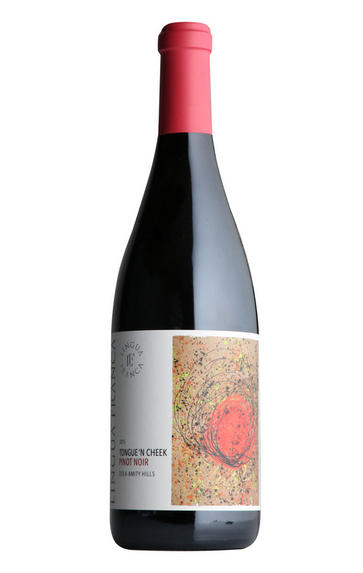
2021 Lingua Franca, Tongue'n Cheek Pinot Noir, Eola-Amity Hills, Oregon, USA
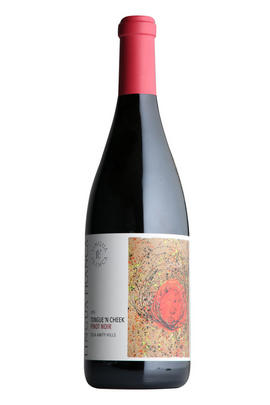
About this WINE
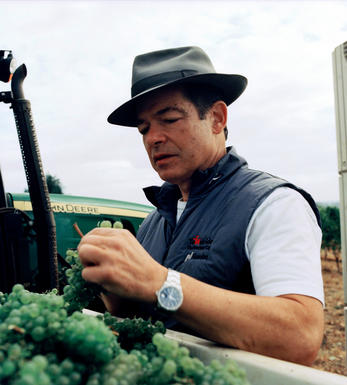
Lingua Franca
Lingua Franca in Oregon is the realisation of a life’s ambition for Master Sommelier Larry Stone. Having bought a site in the Eola-Amity Hills in 2012, Larry joined forces with David Honig and Dominique Lafon to create wines of expression and nuance.
The impressive triumvirate behind Lingua Franca enlisted Lafon’s protégé Thomas Savre as the winemaker, while Dominique supports as a consultant himself. Thomas brought his experience from several Burgundian greats and his time at Lingua Franca’s neighbour Evening Lands where was able to learn from Dominique.
The ethos at the birth of the project was about creating wines which have a sense of place and this is something for which all involved have both passion and expertise.
Larry’s vineyard is 27ha sitting among auspicious neighbours, Seven Springs and Lone Star Vineyards. This is a hillside which Larry rightly judged to have the ideal easterly exposure, catching the morning sunshine and gentle cooling breezes.
Larry has planted exclusively Dijon and heritage clones of Pinot Noir and Chardonnay. These are sourced from specific vineyards whenever possible – cuttings from Le Montrachet for example. The Chardonnay occupies the stoniest soils to bring a distinctive minerality to the wines. The Pinot is found on silty loam “Jory” and marine fossil Nekia soils.
Larry’s enthusiasm for the vineyard was the driving force behind this project so it is perhaps unsurprising that an organic and biodynamic approach is taken in its management. The attention to detail is meticulous and the regime is as much about encouraging biodiversity as it is vine health. The winery has also been built with the environment in mind, with numerous initiatives to reduce energy consumption and reuse water and CO2.
The approach to the wine making is no less scrupulous than the care of the vines themselves. The grapes are first sorted in the vineyard before a second sorting by hand in the winery. Enormous care is taken to ensure that they are kept in perfect condition and only whole grapes make it to the wine. Depending on the vintage there is a proportion of whole clusters used for the Pinot to increase complexity.
Pigéage (punching down) is conducted by foot here, a practice not often seen in wineries these days. Thomas is convinced that this more intuitive approach gives a better result than the mechanised alternative.
The range is made up of the estate wines together with some bought in fruit from single site. These are classic Oregon, always elegant and full of pure fruit but completed with notes of spice and earth which elevate them to give them a true sense of place.
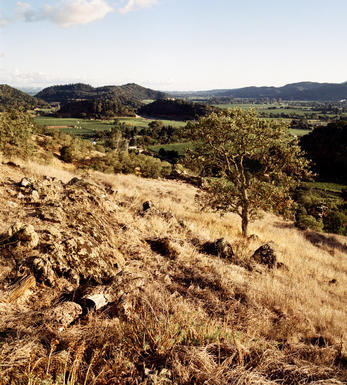
Sonoma County
North Coast's Sonoma County is California's largest AVA with 19,800 ha (2005) of vines. It has forever been the home of the meek and mild small grower as compared to the grandeur and might of neighbour Napa; more picturesque too, as much of the sandy, gravely loam land belonged to true orchards and fruit farms until the 1970s.
Sonoma Valley covers a small part of Sonoma County but its wines often outshine its illustrious neighbours in Napa County. Zinfandel, Pinot Noir, Chardonnay, and Cabernet Sauvignon are cultivated here with much success. Sonoma Valley has long enjoyed a special place in the history of California wine. The first vineyards in the valley were planted by Franciscan monks in 1823. In 1857 Agoston Haraszthy, one of the founding fathers of California's commercial winemaking, opened here the highly successful Buena Vista Winery.
Closer to the coast are the region's top producing AVAs for Pinot Noir and Chardonnay: Russian River, Sonoma Coast and Green Valley, while the slightly warmer Dry Creek and Alexander Valleys have earned a reputation as a hotspot for Cabernet, and increasingly, Zinfandel and Merlot.
Recommended producers
Ridge, Teira, Williams & Selyem, Rochioli are definitely worth investigating.
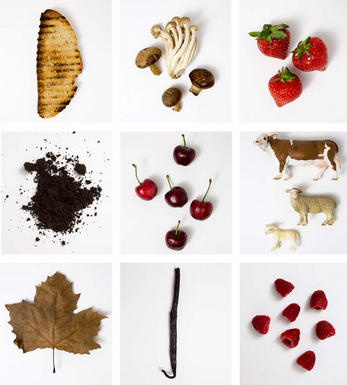
Pinot Noir
Pinot Noir is probably the most frustrating, and at times infuriating, wine grape in the world. However when it is successful, it can produce some of the most sublime wines known to man. This thin-skinned grape which grows in small, tight bunches performs well on well-drained, deepish limestone based subsoils as are found on Burgundy's Côte d'Or.
Pinot Noir is more susceptible than other varieties to over cropping - concentration and varietal character disappear rapidly if yields are excessive and yields as little as 25hl/ha are the norm for some climats of the Côte d`Or.
Because of the thinness of the skins, Pinot Noir wines are lighter in colour, body and tannins. However the best wines have grip, complexity and an intensity of fruit seldom found in wine from other grapes. Young Pinot Noir can smell almost sweet, redolent with freshly crushed raspberries, cherries and redcurrants. When mature, the best wines develop a sensuous, silky mouth feel with the fruit flavours deepening and gamey "sous-bois" nuances emerging.
The best examples are still found in Burgundy, although Pinot Noir`s key role in Champagne should not be forgotten. It is grown throughout the world with notable success in the Carneros and Russian River Valley districts of California, and the Martinborough and Central Otago regions of New Zealand.


Buying options
Add to wishlist
wine at a glance
Delivery and quality guarantee